Hiking with Dogs
Banff & the Canadian Rockies
The most marvellous thing about the Canadian National Parks is that dogs are allowed on the trails, so why explore the mountains alone when you can bring your four-legged companion?
Hobbit the Texas shelter dog and I have covered hundreds of kilometers and a rather large number of meters of elevation gain since her move here last summer. In ode of our ventures here are some tips, tricks and mistakes we have learned from along the way.
The Responsibility
On traveling through the States I discovered that dogs are not so welcome on National Park trails, so I am all the more thankful our Parks people allow them on ours (and even passed a dog treat to Hobbit in my passenger seat as I picked up my latest park pass). I consider it our responsibility to act as stewards to the magnificent landscape and respect the nature and wildlife, and this extends to our dogs.
1. Simplest rule is keep your dog on leash. As well trained as your dog may be you never know just how intrigued she may be by the herd of sheep, deer, or rogue squirrel crossing the trail. To avoid a hefty fine and for the safety of the wildlife, your dog, and more importantly yourself, keep her tethered by your side. Dogs are not bear deterrents but may actually be attractants – by bringing them on the trail you may be increasing your risk of a negative wildlife experience. Hobbit has alerted me to marmots in rock fields, all of the chipmunks (allllll of the chipmunks), ptarmigan camouflaged along the trail, and sheep around the next corner. I have yet to encounter a bear, moose, elk or cougar on my path and plan to keep it that way. No need to have them run off to investigate only to bring back a much larger friend who is not quite as keen on seeing you. To learn more about being bear aware and what to do if you happen to cross paths check out Wild Smart.
2. Take care of the waste. The only scat I want to identify on trail is that of wildlife. This is not the time to take cheap bags (trust me I know). I will double bag it before tying it to her pack so even the scratchiest of branches won’t result in a clean up. I typically plan to arrive at the trailhead ten minutes before official start time to allow a walk around the lot so we have one poop out of the way and typically will only be carrying one bag out after a six hour hike. Because no one wants to stare at poop for that long.
3. Learn your dog extended trail etiquette. Time to add onto trail etiquette of yielding to uphill hikers, passing on the left, leaving no trace, and not blasting music (but seriously I could write a full paragraph on this last one. But why? Why must I listen to Taylor Swift with you? Please don’t make me). Be extra vigilant in yielding to other hikers, regardless of your direction. Once Hobbit is wearing her pack she is in business mode and will not acknowledge passing hikers however I have found people’s body language give a pretty clear indication if they want to say hello, are indifferent, or are uncomfortable with dogs. If the trail narrows or your fellow hiker seems wary it is your responsibility to let them by first.
When passing or meeting another dog ask first if they should meet (or just assume not). I will have Hobbit stand on the outside of the trail to avoid unnecessary meetings so we can all carry on our merry way. Give each other space particularly on more challenging terrain. Earlier this year when descending Ha Ling, a not so challenging peak but definitely enough scree and grade you want to mind your footing as you head back down a dog without a leash bounded up to us, as the owners yelled from below their dog was friendly, Hobbit tugged at her leash to move away from the dog, challenging my balance. They did not take kindly to me yelling to call their dog off and my mutterings as I passed by a minute later. A few iffy moments of balance could have been much worse if Hobbit was a larger dog with less leash control or not dog-friendly. Play nice with your fellow trail users.
The Prep
Alright enough chastising, now for the practical and fun bittage.
1. Talk with your vet. Your vet knows your dog best and will be able to advise you when it is safe to start hiking with your pet. Hobbit was well into adulthood when adopted so development wasn’t much of an issue however a slightly wonky back leg ligament and the tail end of heartworm treatments (now officially negative hurrah!) were our issues to keep in mind.
2.Your dog isn’t Wonder Woman. Similar to every spring when elevation gain feels just that much more challenging and distances all the longer your dog needs time to work up their stamina and endurance. Hobbit and I start off with a test run up Sulphur Mountain in the spring. It’s a rather unexciting series of switchbacks but free of avalanche danger and generally well plodded upon come late May, allowing us to regain those muscles that have been devoid of use. Allow some shorter hikes to work up their paw durability and don’t go straight to the rockiest of hikes (Windtower, I am looking at you).
3. Learn how to work together. Thankfully Hobbit is pretty in tune with my pace but three commands that come in handy are ‘leave it’, ‘up’ and ‘easy’. I don’t mind her stopping to stare down a squirrel off the trail however pouncing after it is not respecting the animal’s space (still perfecting this one). A simple ‘leave it’ indicates we are going to continue on the trail and to get back into hiking mode. We use ‘up’ as a way to indicate to Hobbit where to go (typically in the upward direction). We practice this regularly on boulders around town and it has become one of her favourite games. When scrambling a simple ‘up’ command has her scaling those rocky surfaces with one of us supporting from behind. ‘Easy’ is my go to command when we are descending on more challenging terrain, it indicates to her my pace may be slowing. Quite honestly I think I could declare ‘hippopotamus’ or ‘spoon’ and the result would be the same, but she visually checks in with me. When hiking up I allow her to go on ahead of me at the extent of her leash, afterall she likes the views up front, but when descending I have her walk behind me. It allows for me to concentrate solely on my footing and having her nearby means I am less likely to be pulled off balance.
4. Flea and tick medication. Go over this with your vet. Banff has an increasing problem with ticks so take preventative measures and tick check your pup after any hikes.
5. Start early to avoid the heat and the crowds. Dogs are particularly susceptible to overheating, so start early in the morning, check out Mountain Forecast to prepare for the highs and lows you may experience. In Banff that may mean a 5:30am start in the summer, but all the more enjoyable to watch the alpenglow and the play of light and shadow as the sun rises above the peaks.
The Gear
Lord knows I will put off buying my own new equipment until the last possible moment (as my thirty year old sleeping bag pukes feathers on me every night), but dangit this dog is decked out in all the best.
Ruffwear Approach Pack. I did a lot of research when looking for a pack and Ruffwear’s packs repeatedly came out on top. Pricey in comparison to competitors but for something I hope to last many seasons it is worth it. When I grab my hiking boots Hobbit begins doing a happy dance, when her pack comes out she begins leaping in the air. It’s her indicator we are going on a hike and her demeanor with it on is completely different from a normal leash walk. The smaller Singletrak Pack is more than enough for a day hike, however since we plan on working our way up to overnight camping I invested in the Approach Pack. Adjustable straps allows for a perfect fit, external gear loops (I mean, really those are poop bag holders), a handle that allows for me to carry her across faster flowing streams (or just help move her off the trail when passing people in narrow sections), and after much rubbing upon rock, foliage and mud, it still looks in pristine condition. Prepare yourself for a lot of ‘nawws’ and jesting comments about how she is carrying all your gear. Also prepare yourself for less common comments about how unfair it is for a dog to carry things – I tend to not respond but know my choice to have her wear a pack puts her in a hiking mindset and allows me to safely let her navigate terrain.
Ruffwear Front Range Harness. Best for short hikes when I can comfortably carry all of our hiking needs and it is unlikely we will be hauling poop back out with us. This is for when a typical leash and collar would do, but I wouldn’t want a fall from either of us to strain her neck.
Ruffwear Front Range Leash. There are a few more leashes I hope to try out but the Front Range Leash hasn’t failed me yet. I have the older model that is adjustable for hand or waist use. Personally I wear her around my waist, it frees my hands for any falls, to hold onto a pole, and keeps her a bit closer to me. The traffic handle (a little loop near the fastener) acts as a secondary handle to bring her closer to me when passing fellow hikers or to stabilize when on a steep down grade. The Roamer Leash appears to be the closest version available new now.
Musher’s Secret. All dogs in cold climates that refuse to wear booties need to try this. It is essentially a protective moisturizer salve that prevents snow build up in between paws during the winter and acts as a barrier in the summer. The difference between Hobbit’s paws when it is used and not used is obvious. Most people online recommend using it after hikes to soothe them, but I find using it before prevents any dry or hot spots on her pads. Particularly helpful for sections with plenty of scree. You can buy it online through Amazon or in many pet stores.
Water Bowl. I’m not super brand particular on this and believe the one we have is from a dollar store, but as long as it folds down and fits in her pack we are happy. We try to have her drink only filtered water but won’t deny her some refreshments from lakes or flowing streams. Definitely avoid standing water. For a four to five hour hike I take 2L for the both of us, stopping every hour or when her enthusiasm begins to wane.
Treats. Time to treat her like no ones business. Hiking is tough work afterall! Put some extra food in her bowl in the morning, bring along some high calorie treats such as cheese. When hiking it’s a feast at the top for all of us. Second breakfast, elevenses, afternoon tea, all the things!
First Aid Kit. After a hike earlier this year I noticed a developing sore on her paw I became starkly aware of how underprepared I was to deal with any of her injuries. You can purchase numerous levels of pet first aid kits online however you may notice almost all of the items correspond you should carry for yourself. So read up on some simple first aid and check that your own kit is complete (and that the wipes haven’t dried out). Plan for if your dog isn’t able to walk. Are there enough hikers that you can carry her out? Are you able to call for help if you are by yourself?
My Mistakes
1. Refit their harness regularly. In the spring we were both a wee bit chunkier than the end of season past and I had to loosen the girth to fit more comfortably. A mid-summer hike ended with a hot spot on her belly from it rubbing from movement. So refit their packs before every hike, make sure the padding is covering the straps and be vigilant through the hike to make sure it isn’t sitting improperly. The hot spot may have also occurred on account of not evenly packing her saddlebags. We left her saddlebags at home for the next hike and went with the Front Range Harness to allow the spot to fully heal.
2. Not applying Musher’s Secret. Much to my horror during a break in Harvey’s Pass I noticed a whole layer of Hobbit’s paw pad was peeling off – much like a callous. I inspected it and there was new padding underneath and she did not seem bothered by it in the least, but proper footcare is not just for you. This was the light bulb moment where I realized I needed to educate myself on dog first aid.
Recommended Dog Friendly Hikes around Banff and Canmore
Starter Season
Grassi Lakes. A hike easy for all forms of dogs and humans with rewarding views of turquoise lakes. 250m of elevation gain over a 1-2 hour hike in Canmore.
Sulphur Mountain. A switchback forest walk starting from the Banff Hot Springs parking lot. Well traveled in the spring so a great hike to gain some of those hiking muscles back. Dogs are not allowed on the gondolas though so prepare for the hike down as well. 700m elevation.
Ink Pots via Moose Meadows. I avoid Johnston Canyon with Hobbit as there are some sections of grates that she would be unsure of walking on, however a leisurely forest walk up to a meadow with intriquing little pools is a marvelous way to start the season.
Rockbound Lake. Another forest walk that ends at two lakes backed by stark rock walls akin to those in Game of Thrones. 19km total with 870m elevation gain.
Rawson Lake. Starting from the Upper Kananaskis Lake parking lot is one of the most rewarding hikes for the time. Follow the edge of the lake before heading up a series of switchbacks to a blue lake surrounded by towering ridges on both sides. A rewarding hike for dogs that would love a mid-hike swim. For the more adventurous continue up to Sarrail Ridge.
The Rest of Summer
Plain of Six Glaciers. Once the threat of avalanches is gone do this iconic hike. It’s busy, for good reason, so set out at sunrise to have the trail all to yourself. Most of the photos in this post are from this one.
Ha Ling. The trail head is within 10 minutes of downtown Canmore and offers a series of treed switchbacks and scree near the top to test your skills. If you exit the treeline and think Ha Ling peak is too busy, reach the saddle and head right towards Miner’s Peak for what I would argue are even better views.
Windtower. Brilliant views of Mount Lougheed reward you after a real grind through rock to the top. Make sure your dog’s pads are up to the task.
Mount Bourgeau and Harvey Pass. I keep waffling on whether I enjoyed this hike. Copious amounts of forest (8km one way roughly) leads you to a series of lakes and lakelets with commanding views of Sunshine Meadows. The end result is worth it, but the meander down felt somewhere near forevers.
Heart Mountain. A marvellous hike to test your dog’s scrambling abilities.
Tent Ridge. Scrambling went well? Grand! Try Tent Ridge. There are narrow sections however so wouldn’t recommend with a dog who may want to chase the copious amounts of rodenty creatures.
There you have it. A little beginner’s guide to hiking with your dog in Banff. I’ll edit it as my knowledge grows and feel free to leave your comments. In the meantime follow Hobbit on Instagram at @adognamedhobbit.

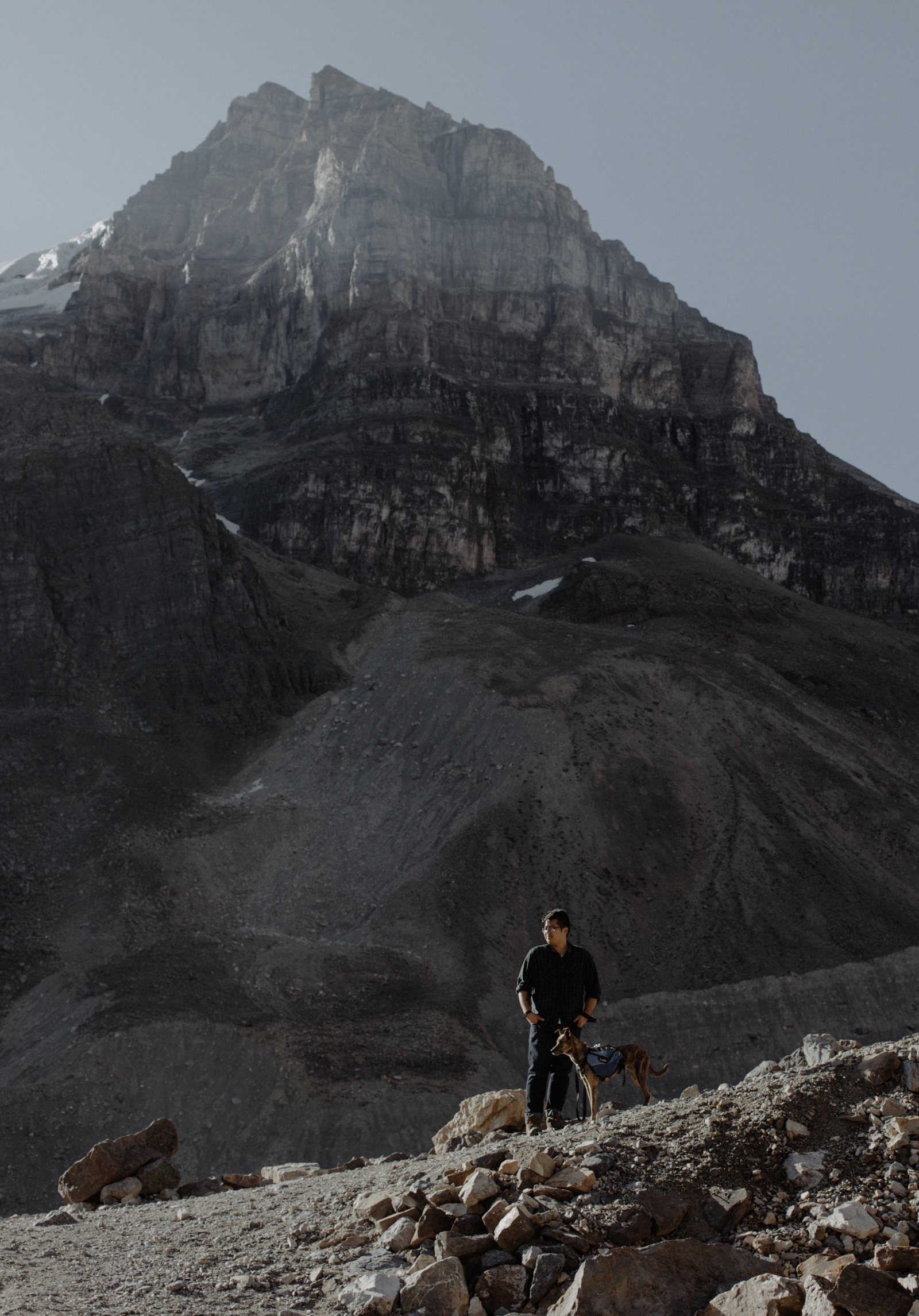
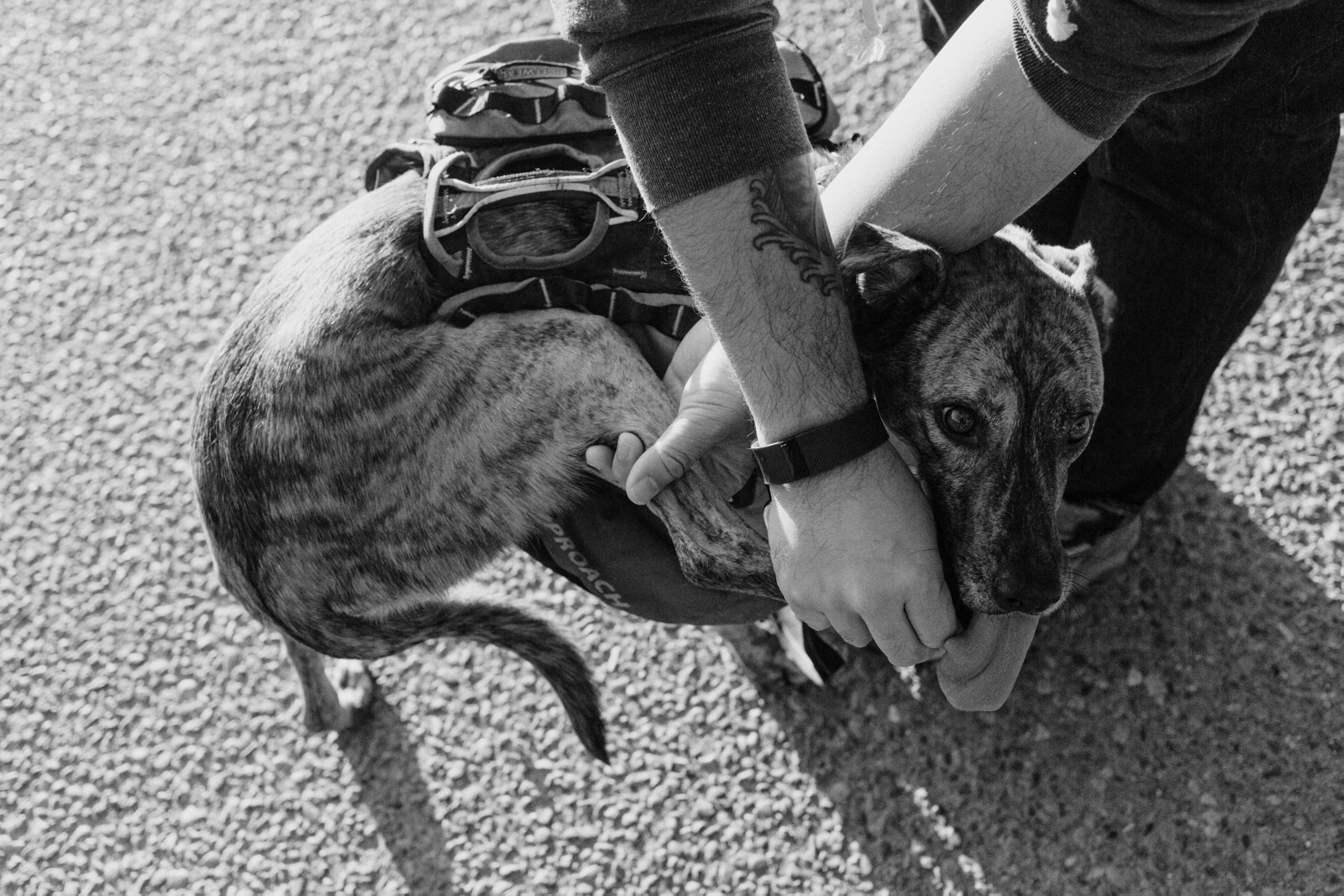
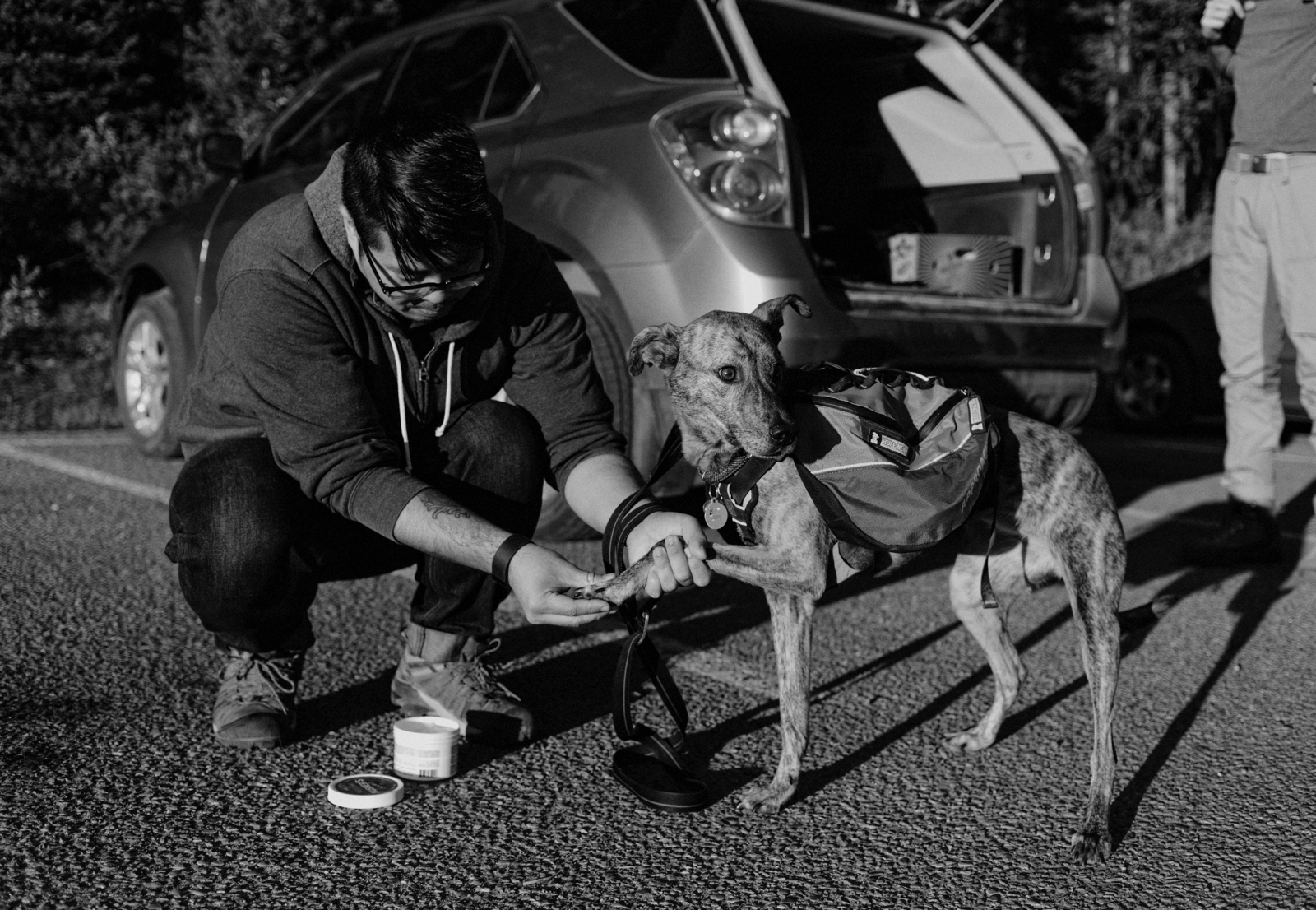
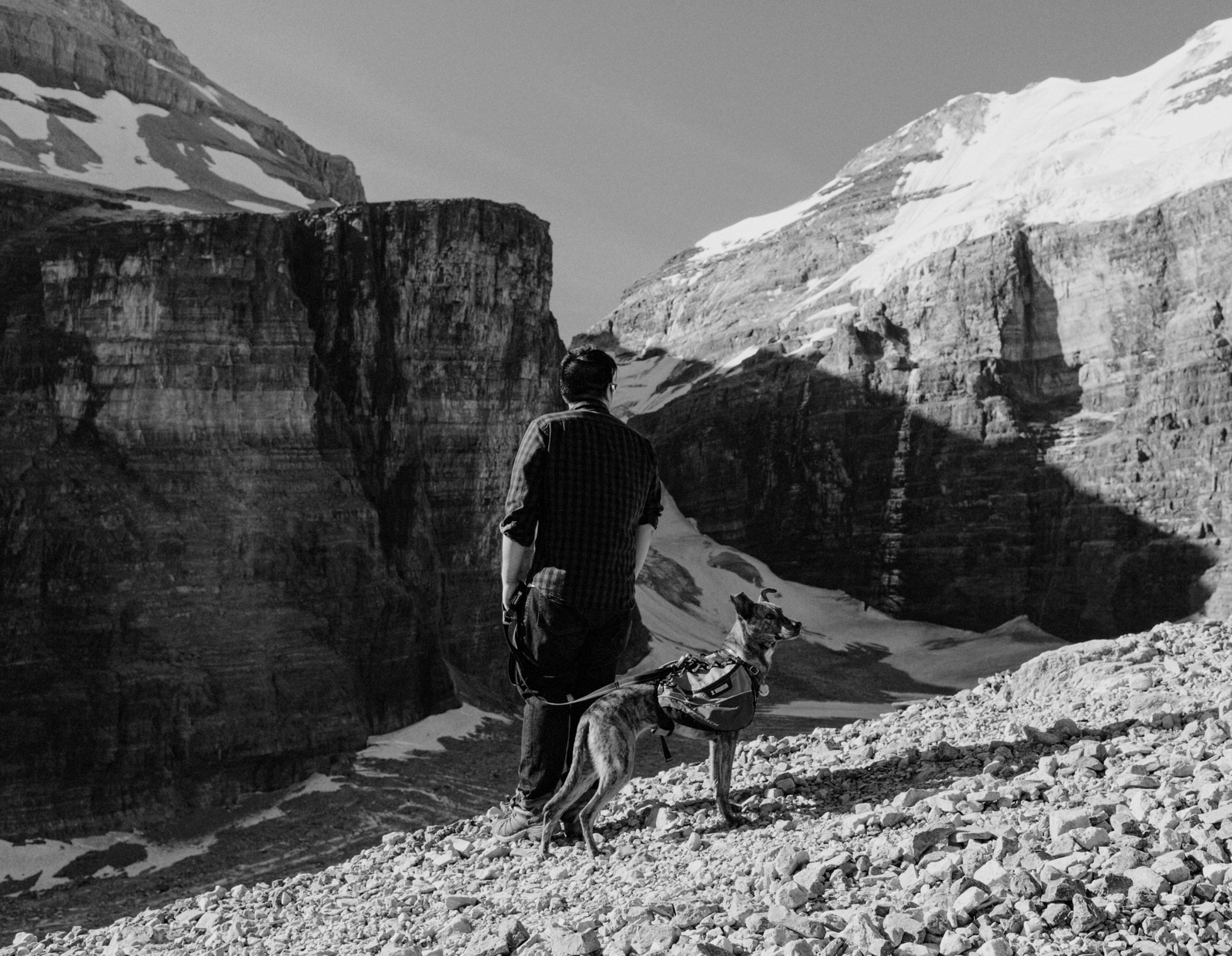
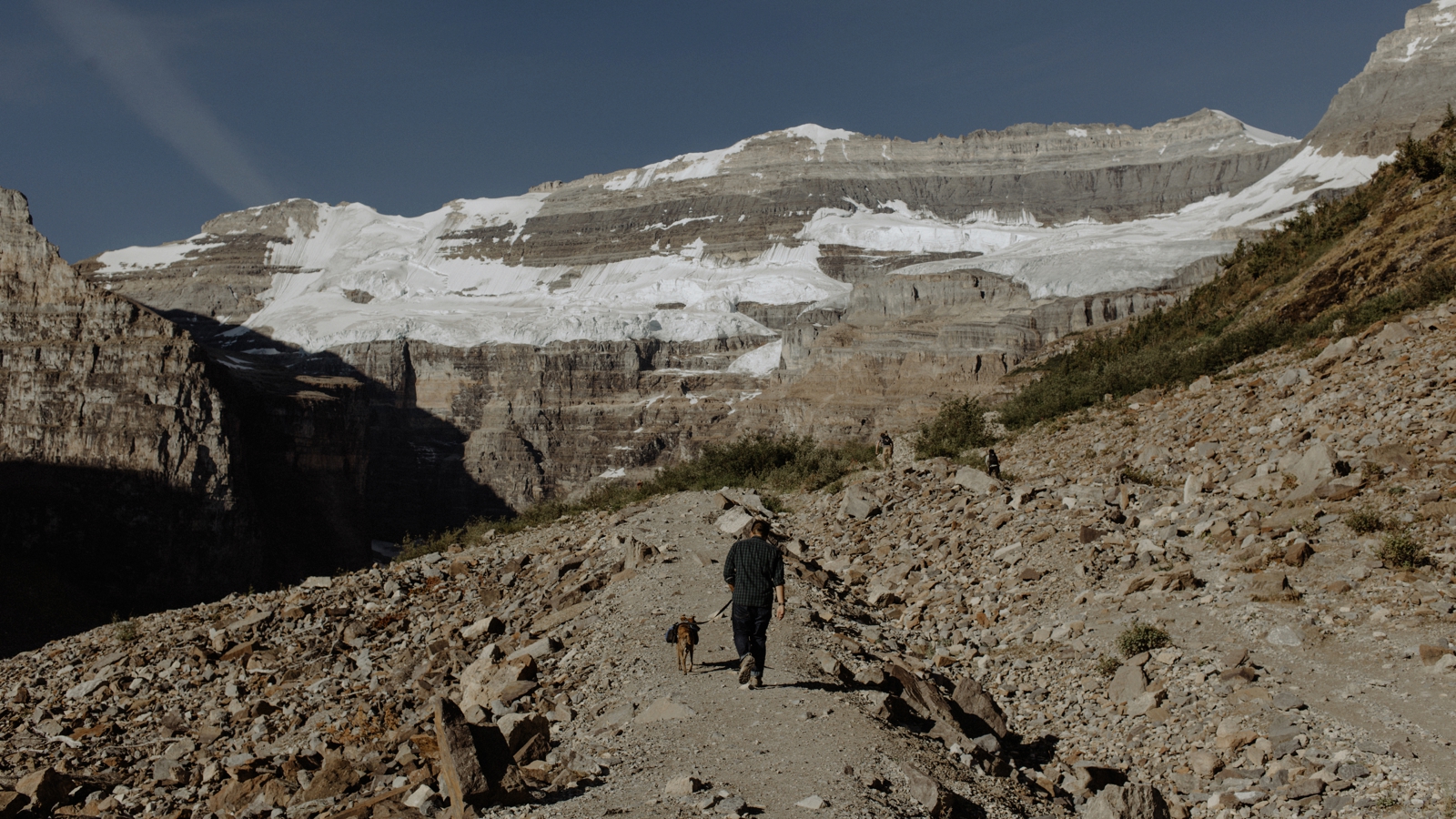
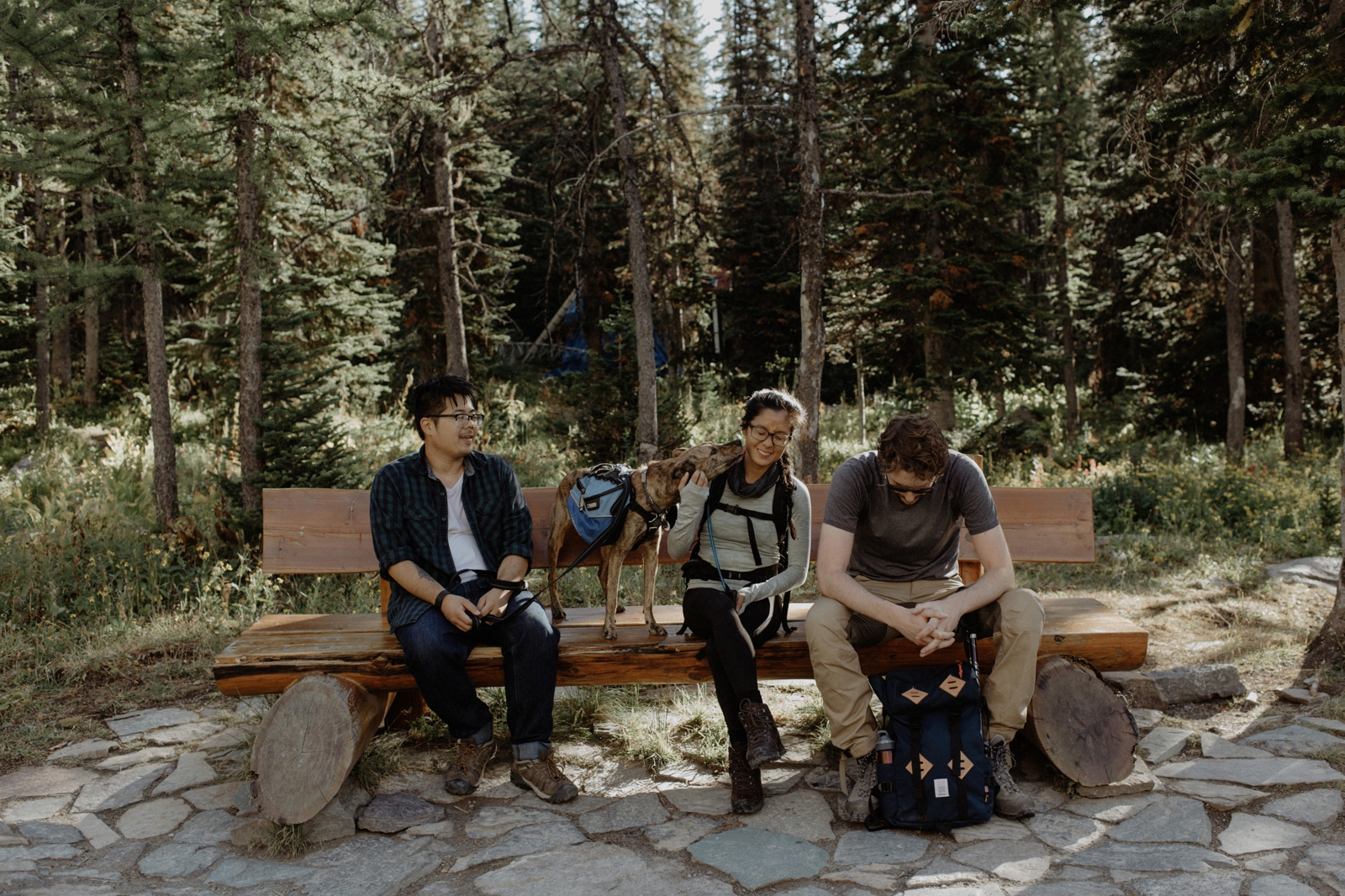
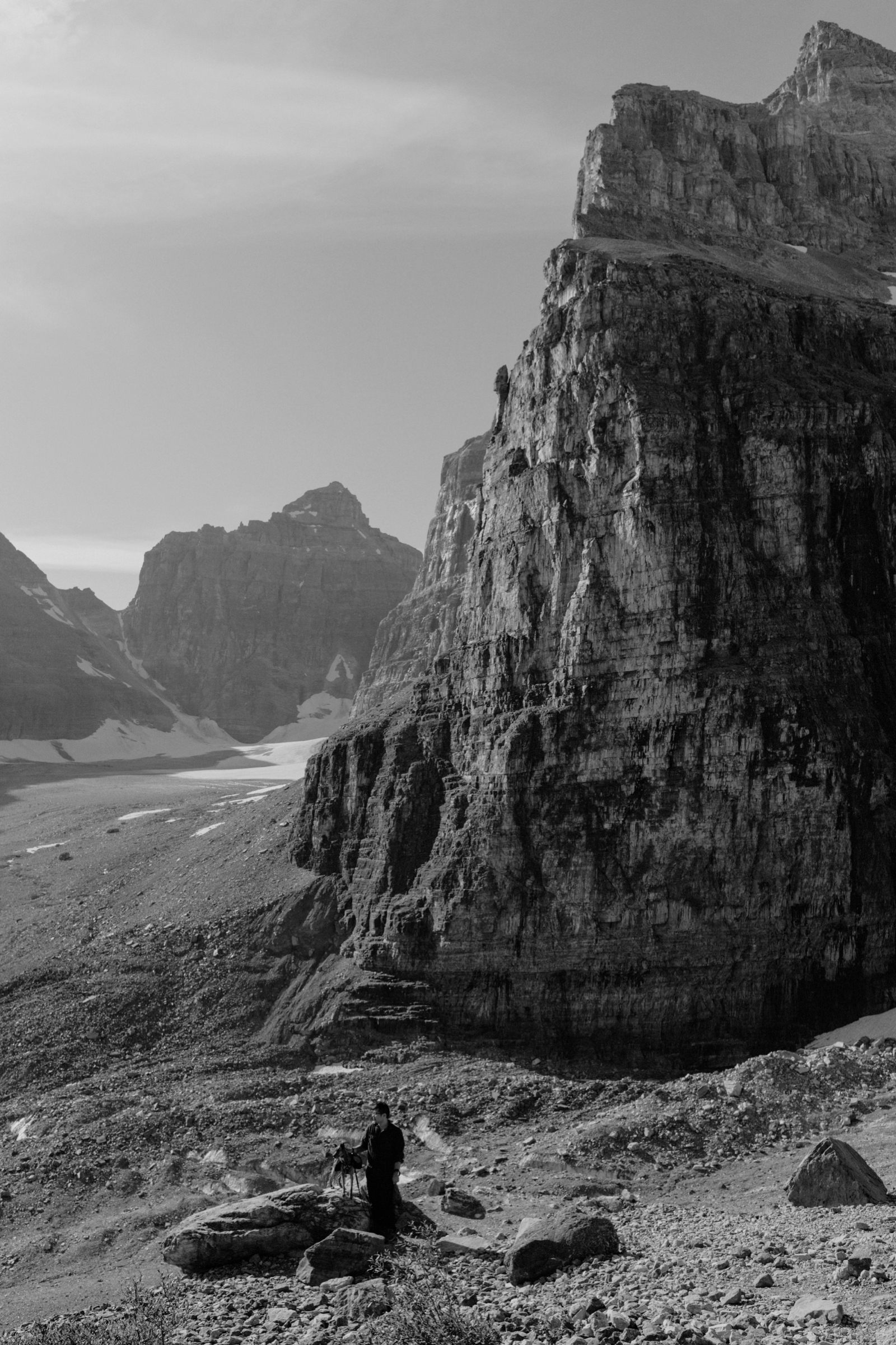
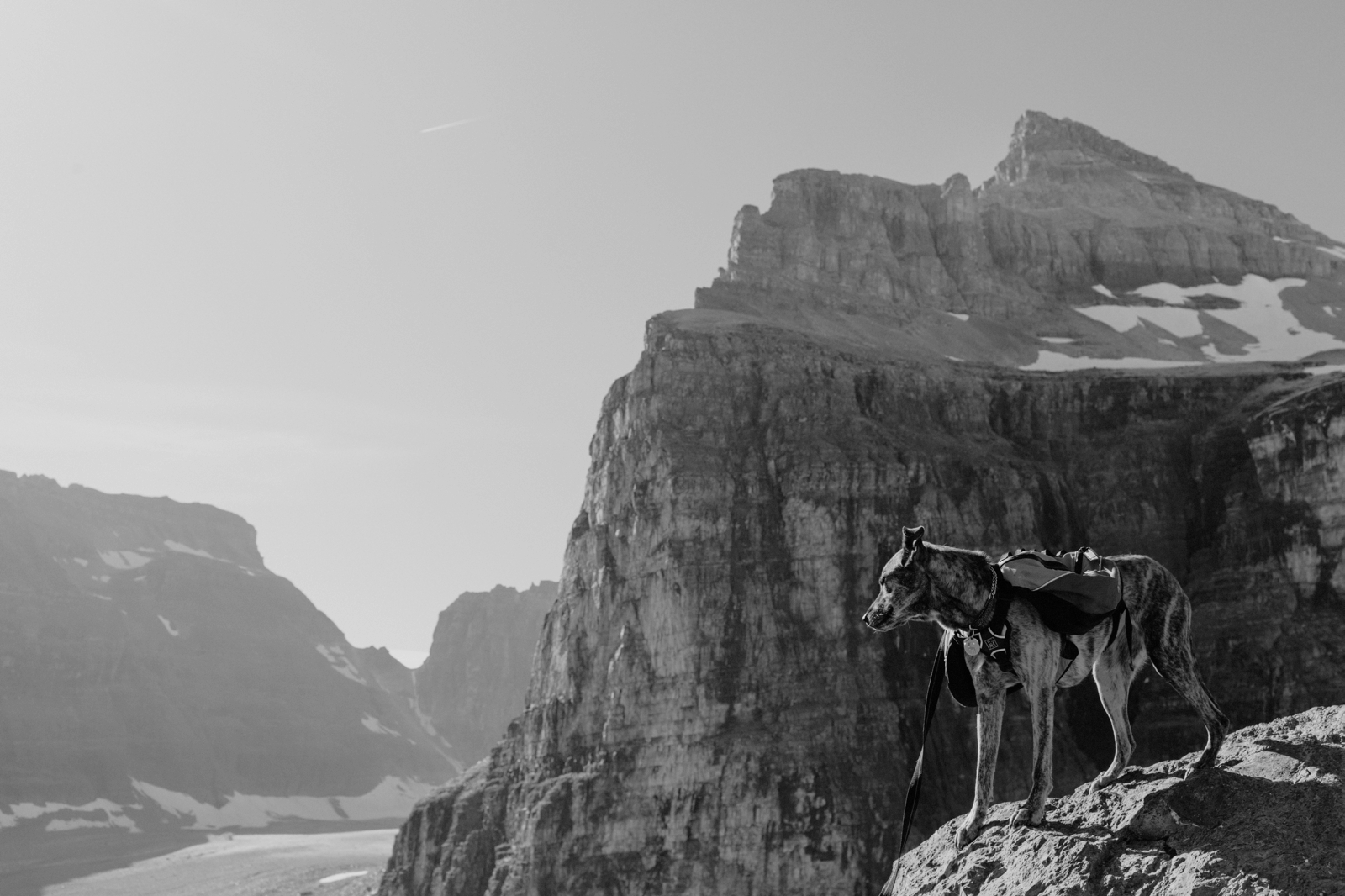
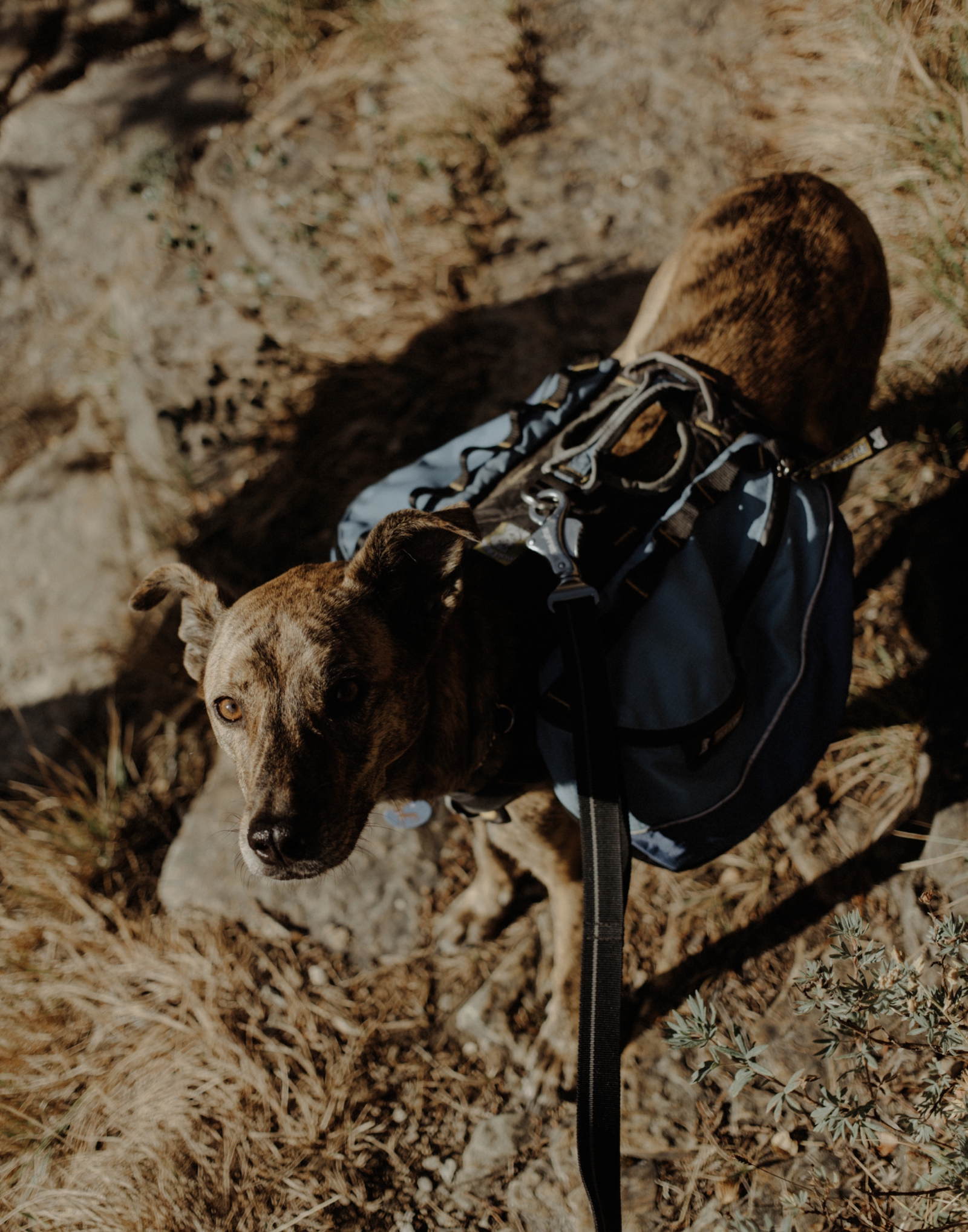
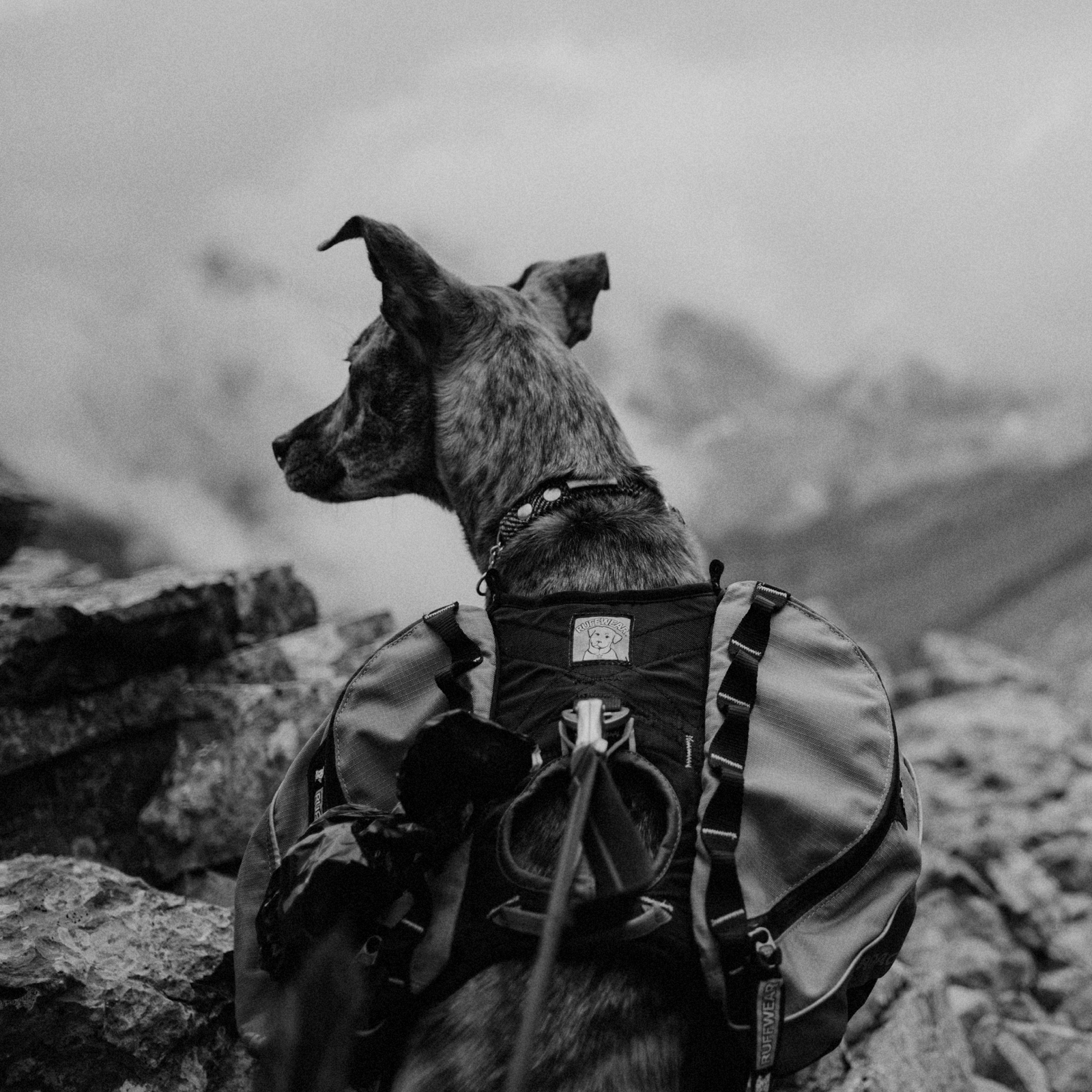
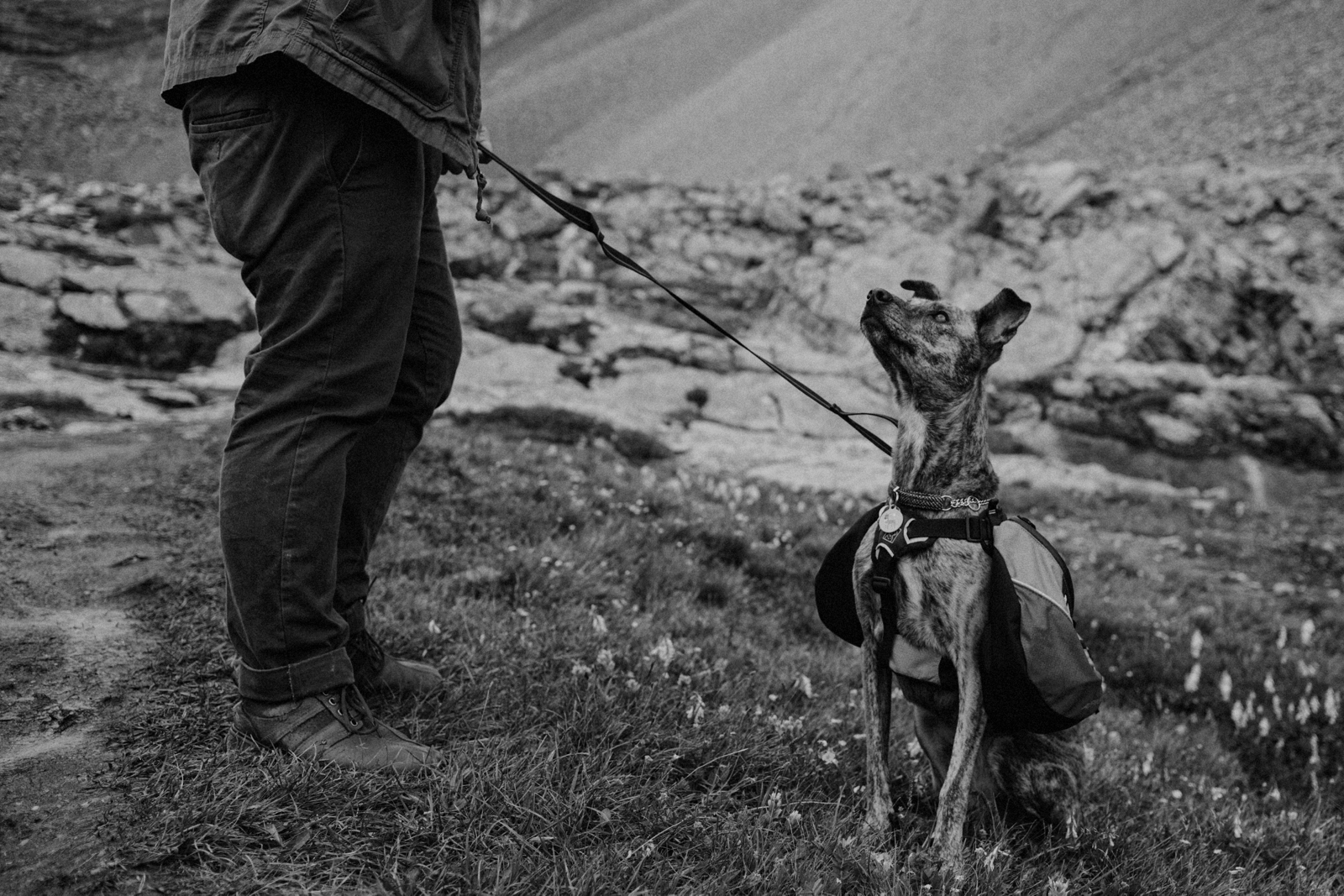
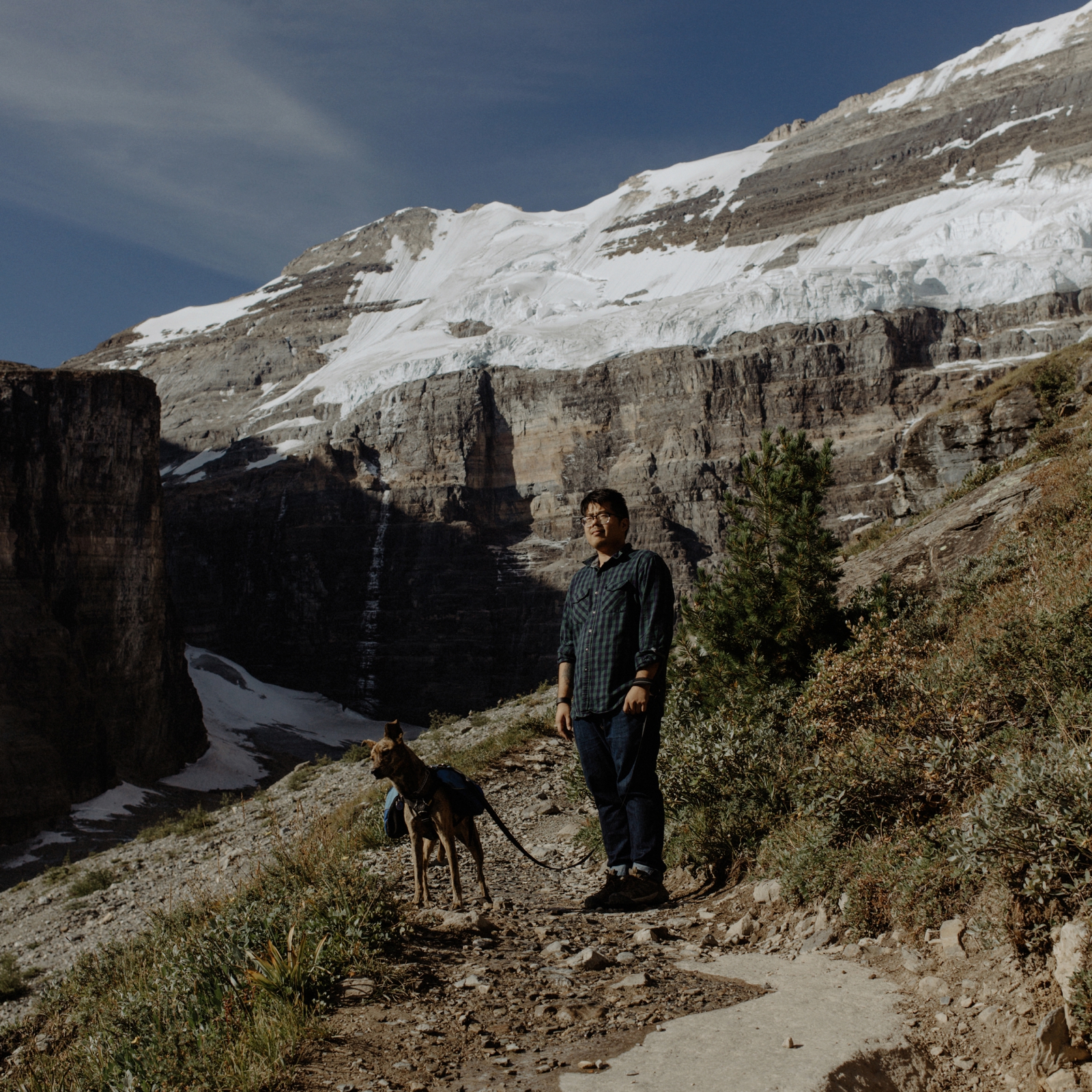
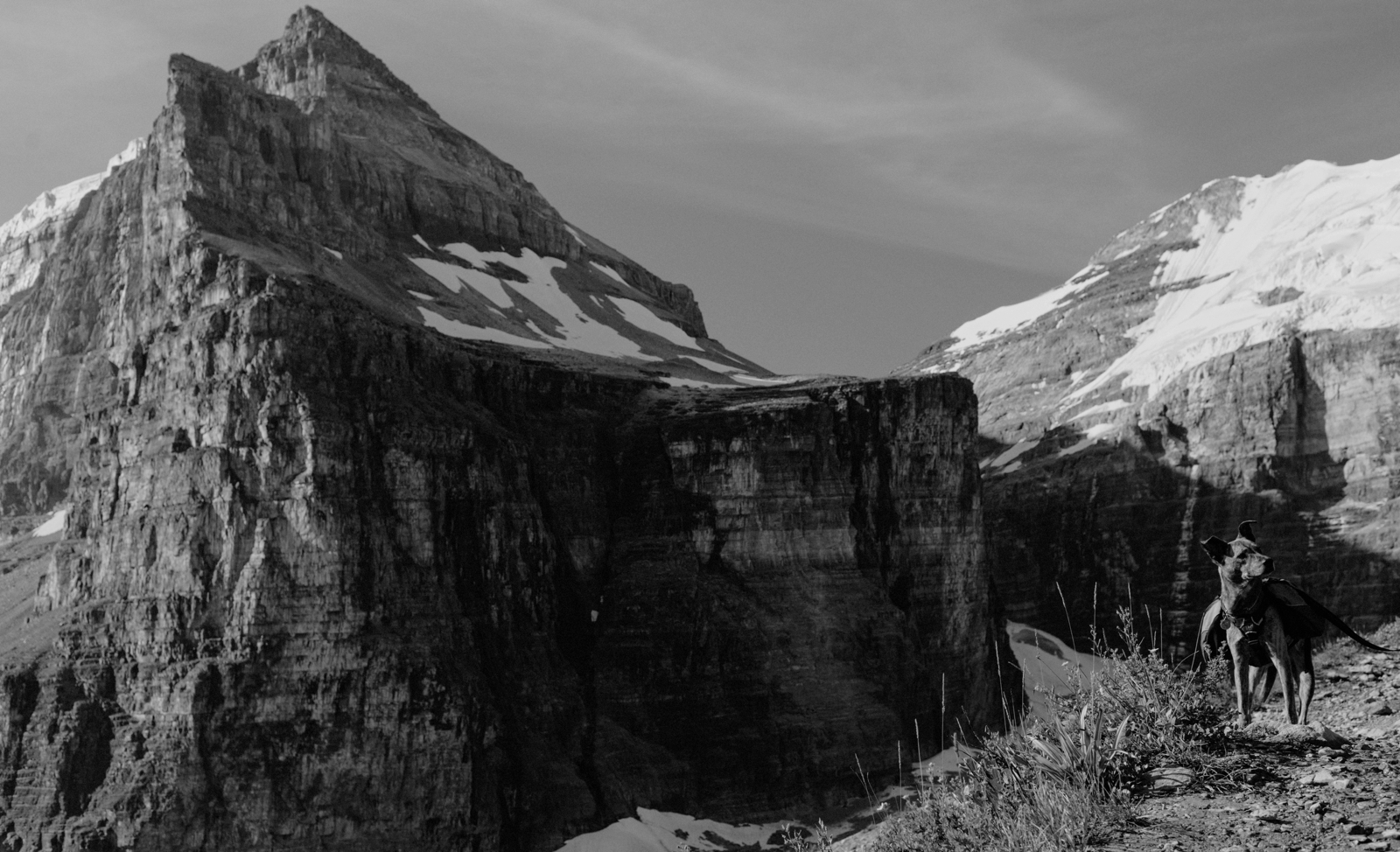
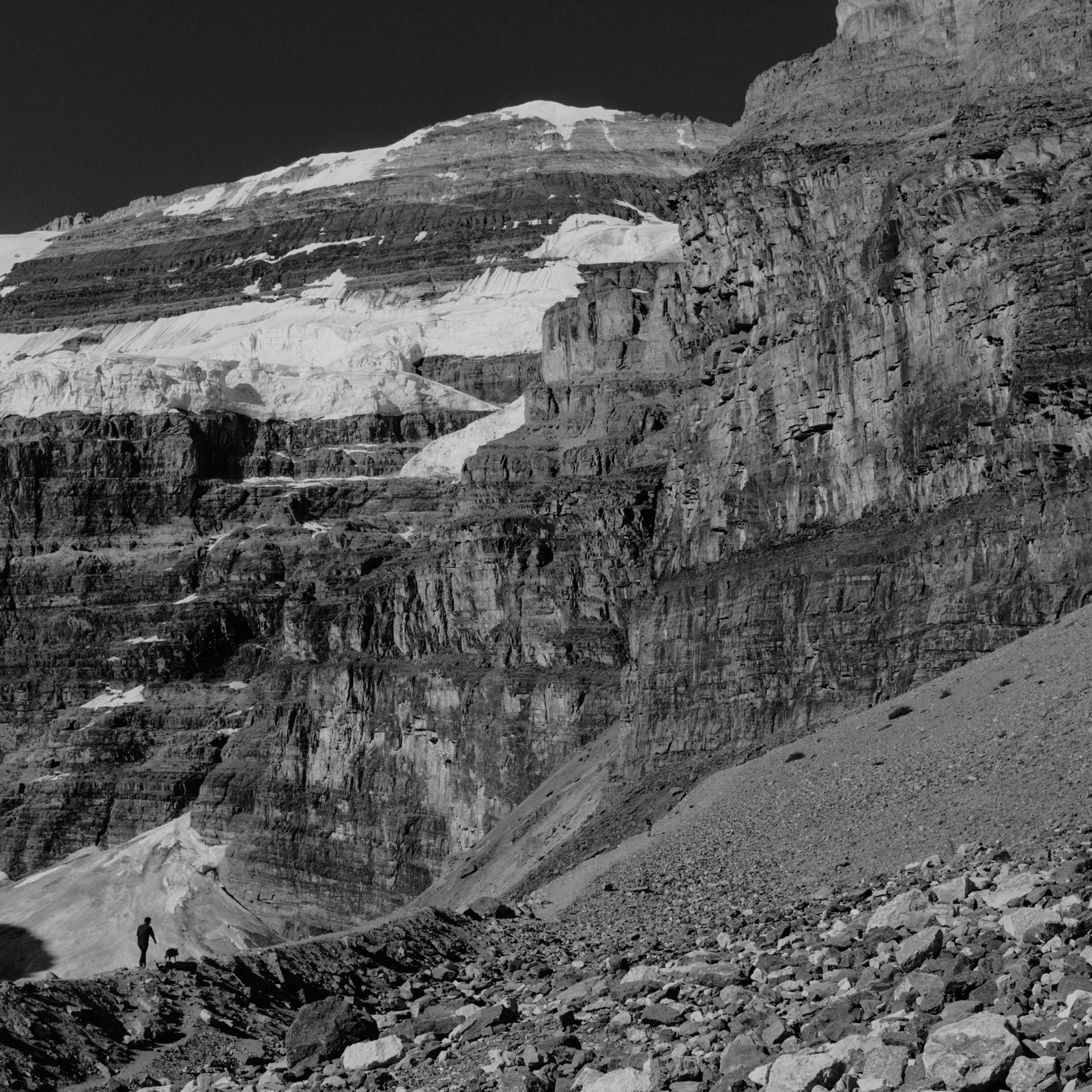
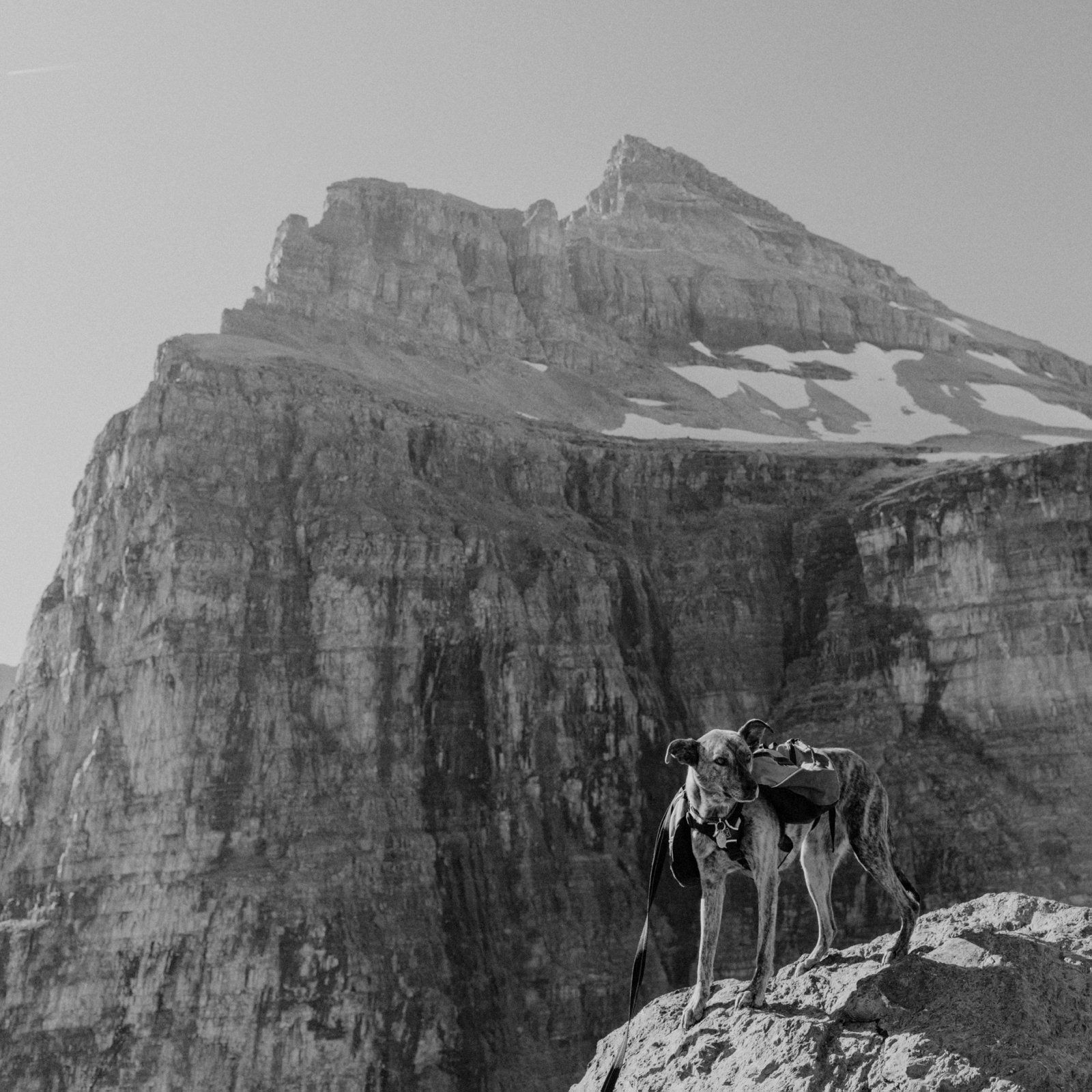
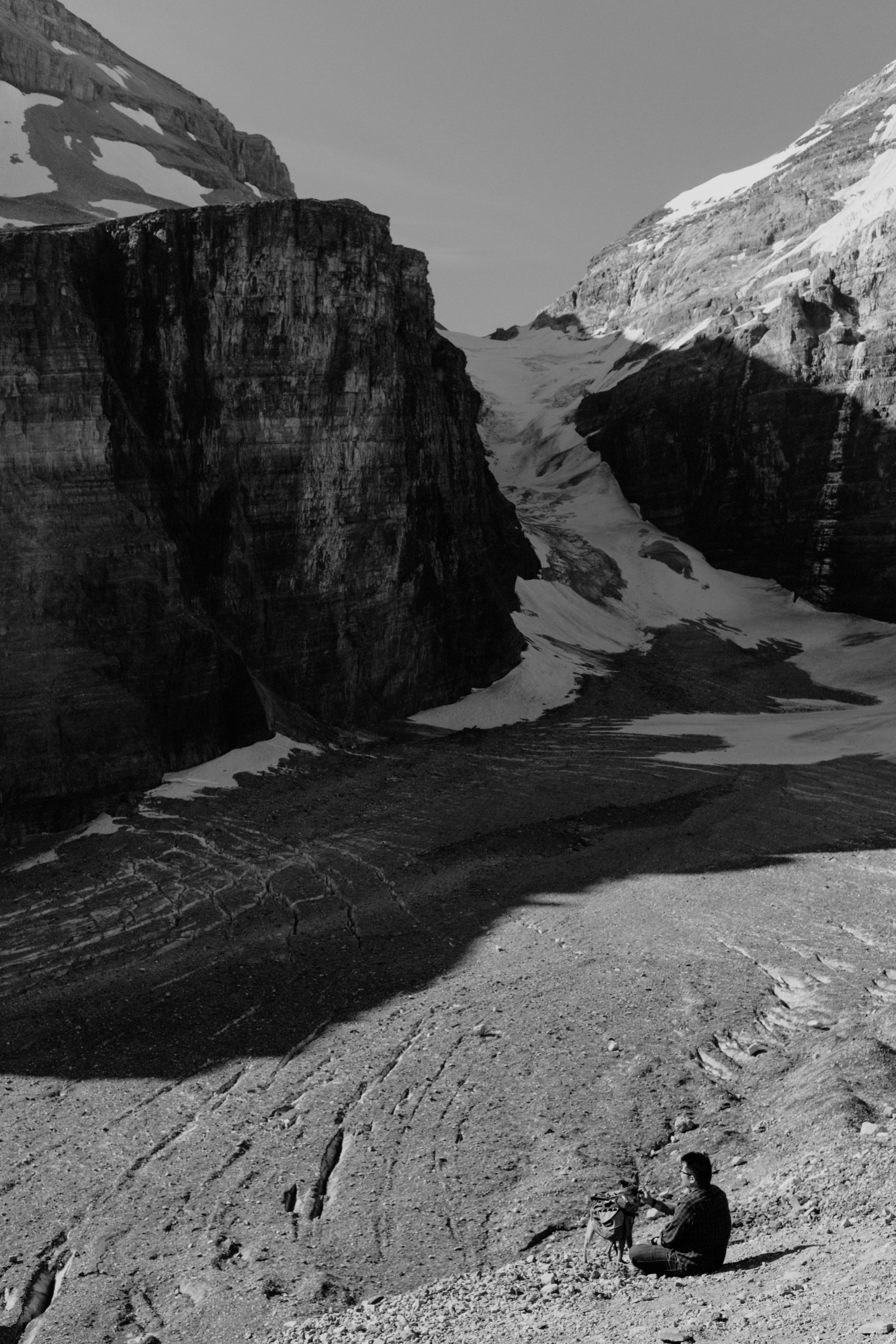
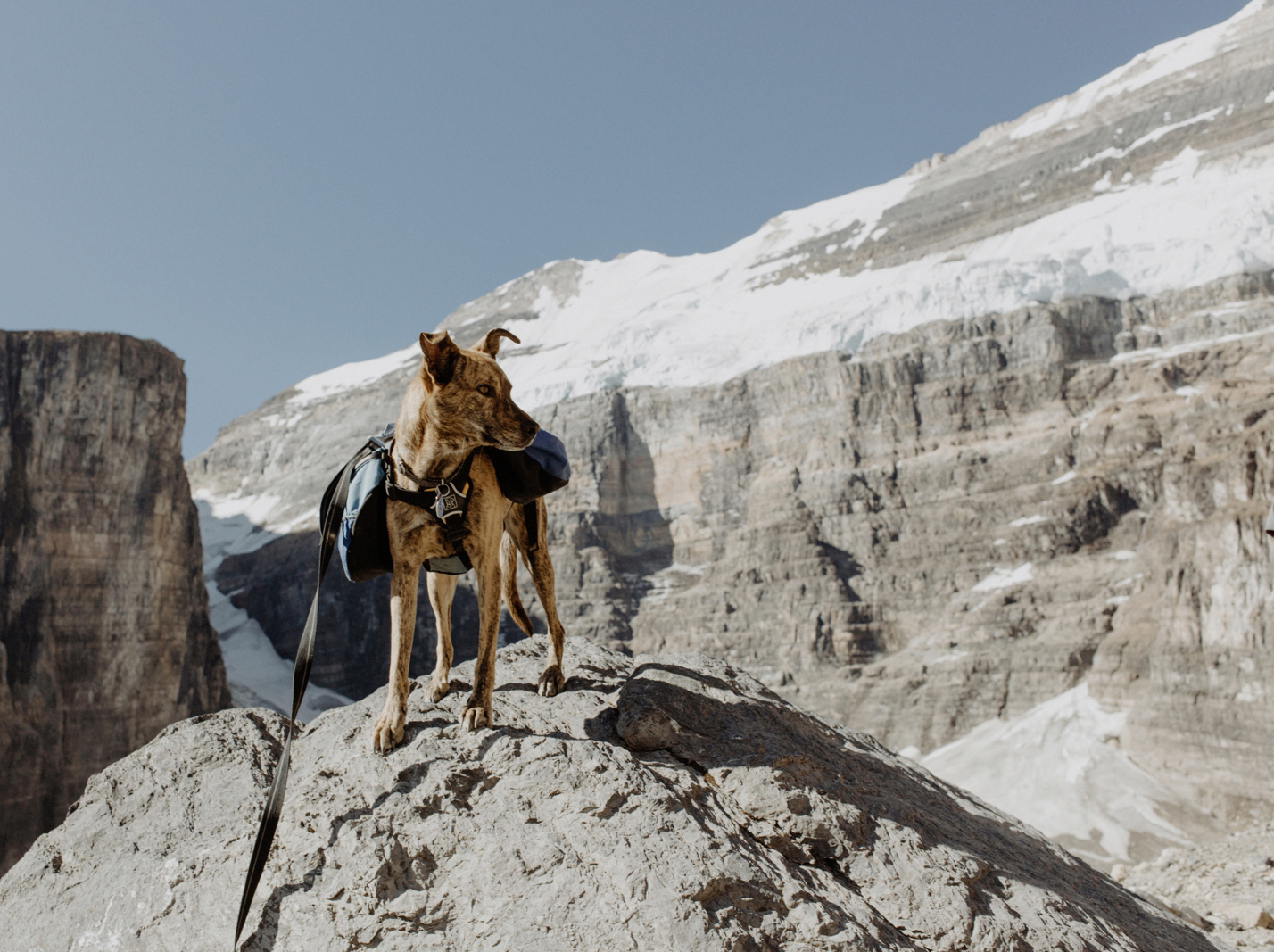
This was an incredibly helpful blog about Banff and doggie etiquette. Thank you so much!
Pingback: Local’s Four Day Itinerary of the Canadian Rockies | Banff and Canmore | Wandering Homebody